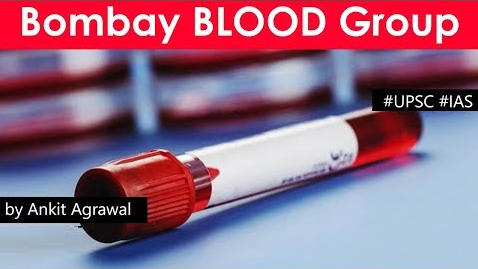Table of Contents




BOMBAY BLOOD GROUP
- In 1900-1902, K. Landsteiner divided the human blood into four groups- A, B, AB and O.
- First discovered in Mumbai (then Bombay) in 1952 by Dr Y M Bhende.
- It is a very rare blood group.
- The Bombay blood group, also called hh.
WHAT IS SO UNIQUE?
- Bombay blood group, is deficient in expressing antigen H.
- That means the RBC has no antigen H.
- For instance, in the AB blood group, both antigens A and B are found. A will have A antigens; B will have B antigens.
- In hh, there are no A or B antigens.

WHY IT IS RARE?
- Globally, the hh blood type has an incidence of one in four million.
- It has a higher incidence in South Asia.
- In India, one in 7,600 to 10,000 are born with this type.
- Dr Arun Thorat, in-charge of Maharashtra State Blood Transfusion Council, said this blood type is more common in South Asia than anywhere else because of inbreeding and close community marriages.
- Shared common ancestry among Indians, Sri Lankans, Pakistanis and Bangladeshis has led to more cases of hh blood phenotype in this region.
CONFUSION B/W O & BOMBAY BLOOD GROUP
- To test for hh blood, an Antigen H blood test is required.
- The difference is that the O group has Antigen H, while the hh group does not.
- If anyone lacks Antigen H, it does not mean he or she suffers from poor immunity or may be more prone to diseases.




Latest Burning Issues | Free PDF






















 WhatsApp
WhatsApp